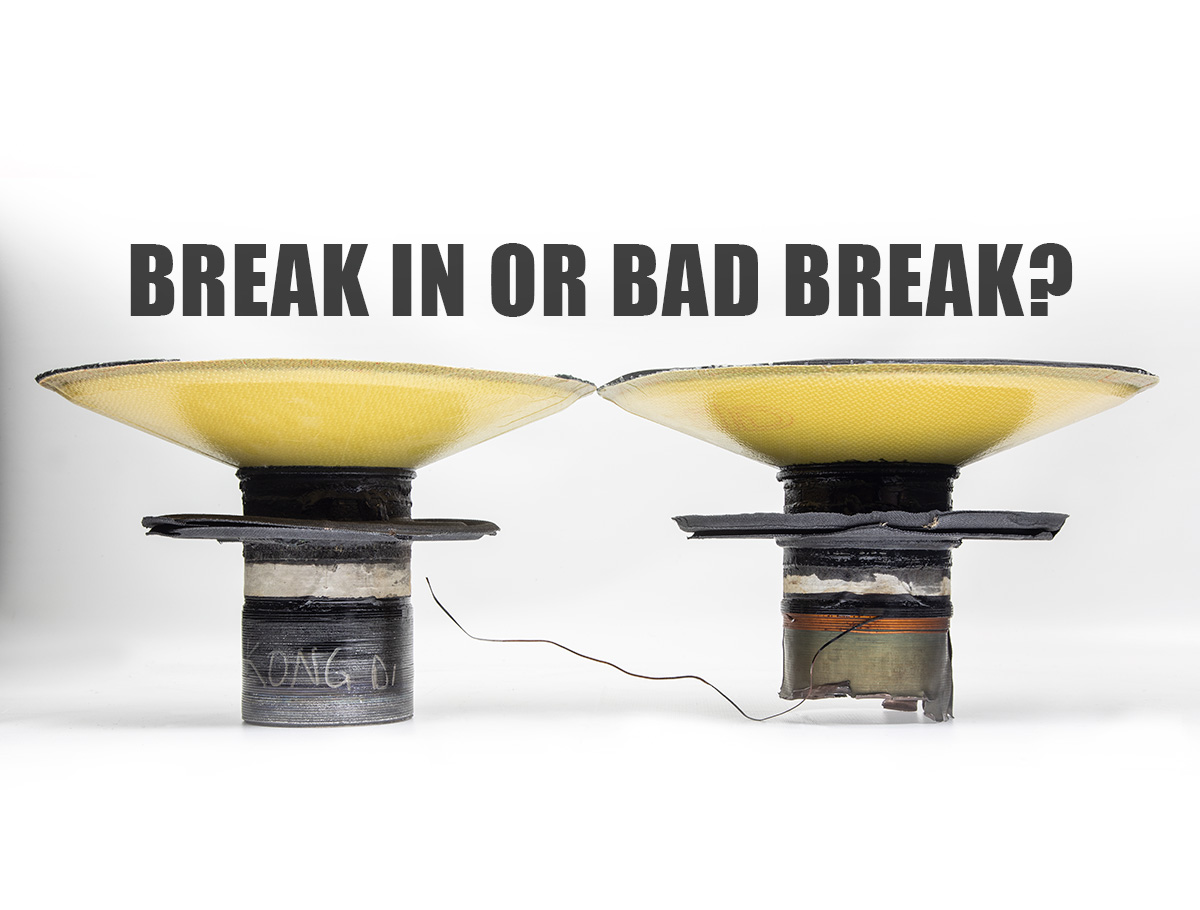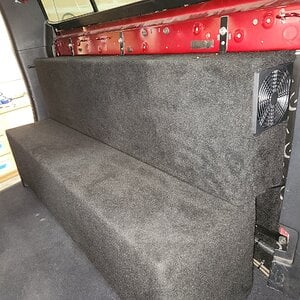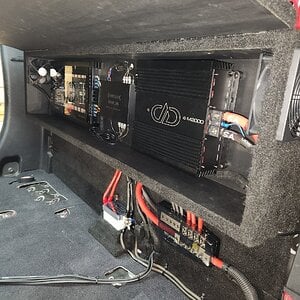Buck 5,000+ posts
little alien on campus
2-3dB gain seems as unlikely as TS parameters changing that much after only a minute and a half of play at 50W. That is so unusual if it were me I'd buy a couple more of those subs to do more careful/thorough testing.
Dunno what their ratings were but spiders failing prematurely was a somewhat commonly problem for Audioque in their early days and "you didn't break it in" was a cop-out they used often when presented with returns on things that had failed. Oddly enough since their first generation of subs we stopped reading about spiders tearing so either everybody is now properly "breaking in" their subs or they sorted their **** out with the shoddy Chinese parts since then.
I'm not looking to argue, I'm demanding evidence to prove dubious claims.
Why take this personal? If you had time to scour my post history I've called ******** on this "break in" thing every time the topic has come up around here. You started by making claims about this "break in" pheomenon, I declared ******** without proof. Burden of proof is on the person who makes a claim.
Again, nobody has attempted to contradict this, but the question is how much and over how much time? Show data to prove this is meaningful for practical purposes.
I'm still waiting on you to give me the names of a few non slowed or re-bassed songs that contain 25hz material. Seriously though, no I do not, but if your point is break in only matters at 25hz, why bring up DD as your evidence when their stuff is NOT designed to tune that low? Do you have any evidence or hard data to prove your claims?
Are you claiming that TS parameters do not predict the output of a woofer in a box? "It sounded better" is absolutely anecdotal and subjective as opposed to objective evidence which could be proven with some recorded data.
No, but give me the names of some non slowed commercial release music and I may give it a whirl. How precisely does this matter?
Again if you're claiming some audible difference that somehow cannot be predicted or shown by changes to TS parameters, post up some before and after RTA graphs or Termlab numbers for proof and do not forget to note after how much and what kind of play time and at what power these changes take place.
Correct. Are you claiming that some "break in" ritual is needed to prevent subs from breaking or are you claiming that there will be some audible difference in output and/or response after some conditions have been met? Or do you claim both? DO you claim that this is with any speakers or only with certain types/brands?
The fact that nobody has nailed any of this down with specifics or any hard data only confirms my assertion that this is largely just pixie dust, unicorn tears, and tribal rain dances. Until I am shown some hard evidence to the contrary I'll go on with my belief that the vast majority of change in compliance in those ultra stiff woofers happens within only minutes of hard play (up to x-max) and that if your sub is failing right out the gate it is from poor parts or build quality or outright abuse and not because someone didn't perform the right ritual beforehand. Furthermore I will continue to demand proof of claims, and if such proof exists you wouldn't need to write three or four text walls in reply but would simply link some videos of side by side testing or some recorded data to prove this claim.
Some links on the topic that provide measured data. My apologies if they use TS parameters as evidence.
[/URL]
[/URL]
[/URL]
Responses from several well known manufacturers when asked about "break in".
[/URL]
You will notice that the ONLY people on this thread who are posting any measured data are proving that any change over time is inaudible. Another interesting point raised here is that never in the history of loudspeakers are any of these "break in" changes for the worse but always make things sound better.
An interesting message posted here by Dr. Sean Olive of Harmon International:
[/URL]
Of course this is followed up by all the subjective feelings of the golden-ear crowd who can really hear the difference 200 hours later, some going as far as to claim a coil will perform differently after some heating and cooling cycles. No lie, there are people who claim amplifiers and even cables need hours of "break in" to really hear nuances and subtleties. Oddly enough nobody who can hear the difference weeks or months later is posting up any hard data by way of RTA graphs or TS parameters changing over time.
This topic has been beaten to death for decades now and I have yet to find any hard data provided by the "break in" camp. Post up some real data and not another page worth of subjective opinions and pseudo science.
It depends literally system by system man, and how it’s being used.
DD’s aren’t designed to be tuned at 38 hz or whatever. That’s just what they recommend. I literally know a DD employee who was working on setting a 20 hz record dude. Idk if you get this, there are no rules in sound. Not when it comes to boxes, that’s the whole point.
And you’re caling out somebody elselike you were there. Based on your logic, where is your data he’s wrong?
My ears are real data. You can look at data all you want, what happens in the real world matters.
Never said anything like a break in time was a good or bad thing. Just said it was a thing.
You’re just narrow minded honestly. You can’t understand things about audio because of you emotions, emotional BS stuff like essentially calling people’s tastes in music bad because they don’t listen to farts all day long.
“It doesn’t matter that you listen to 25 hz bc I don’t.”
Can your prove to me that t/s parameters need to change at all for a woofer to sound different?
I still don’t really disagree with you, but my ears don’t lie. If I wasn’t chronically ill and stuck in a bedroom, I’d love to do soeme tests. I’d really love to pull t/s.
I don’t care what the t/s say on this one. I’ve heard the difference with my ears with some subs and break in time. Usually it’s very short.
I’m not joking about the 9500’s either, there have multiple times and I’ve talked to individuals who say the same. In the past when I was around a lot of DD stuff, specifically the 9500’s would have this moment where they would play louder. And DD told us it would
We all must be retarded and snorting DD unicorn dust right? And DD must be retarded and snorting neodymium magnet shavings right?
I wonder about glue types used for spiders and soft parts, and I wonder if there’s any extended hard cure time on that? Like I wonder if glue strength in relations to play time has anything to do with a break in. I’ve seen spiders lift off of stuff woofers before, but I think that’s usually crap manufacturing (American bass cough cough).
There are electrical proprieties that can change with high heat. Electricity flow is very sensitive to small changes, especially since electricity moves so quickly. Heat can rearrange molecule structures and heat can also take tension out of materials, like heat softens metal and can allow for molecules to move in slightdifferent positions. So fresh wound copper or something, which is typically soft and malleable, could slightly move around inside of things like amps.
No amp I know of needs a break in time, maybe besides a vacuum tube. I guess it depends on people’s ears.
But if you keep saying everyone’s ears are lying to them, idk what to tell you. People could have better ways than you, that could be a factor.




